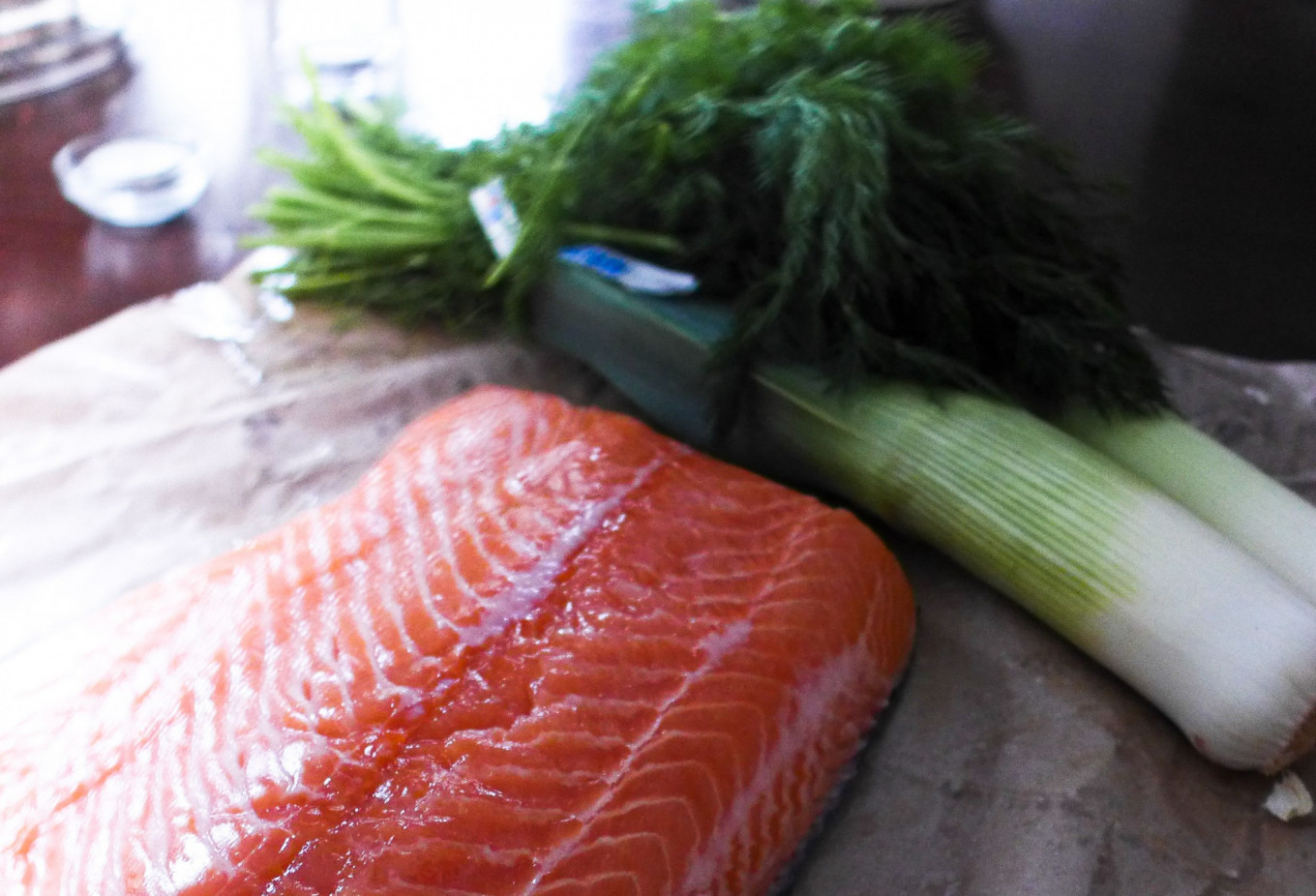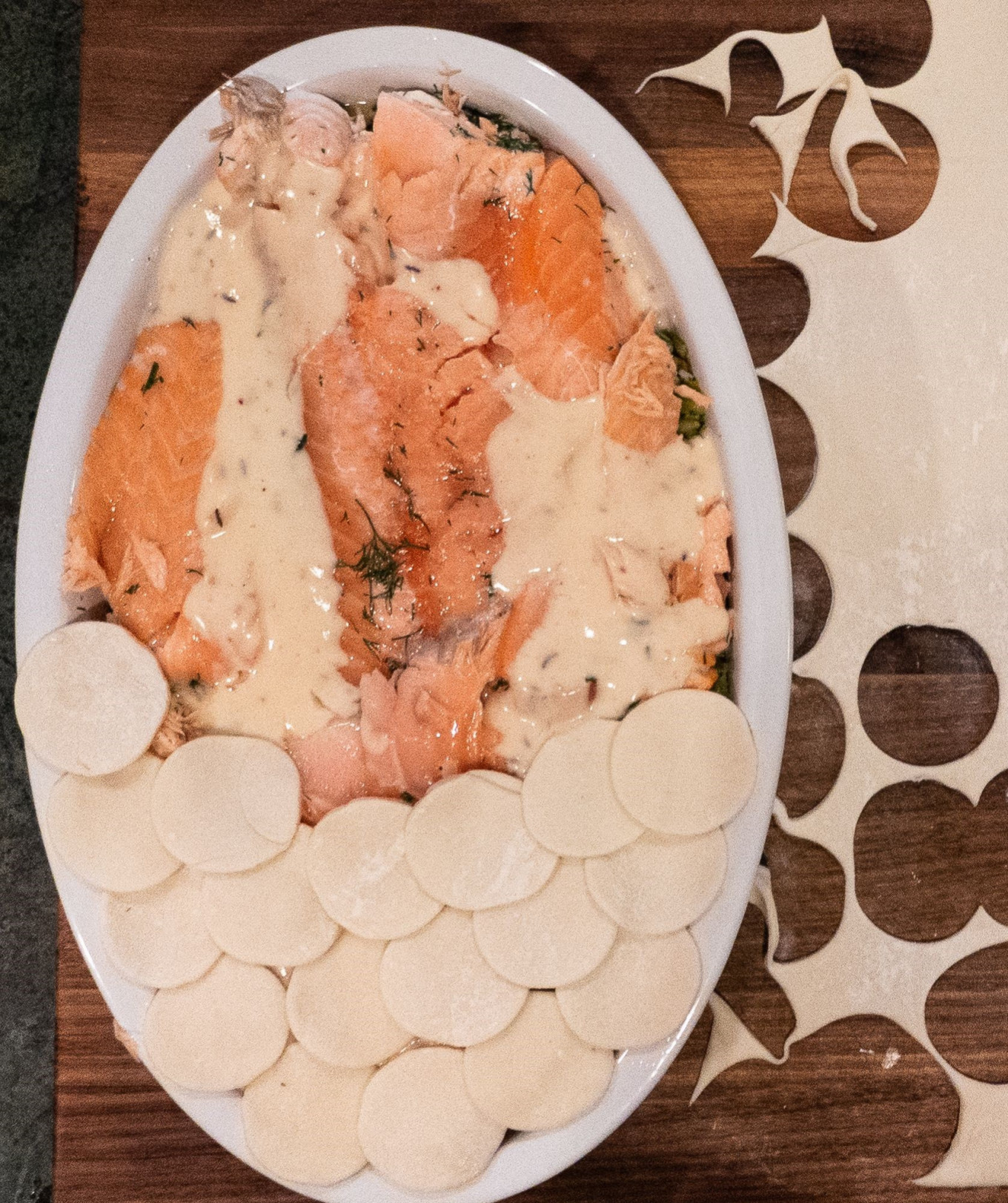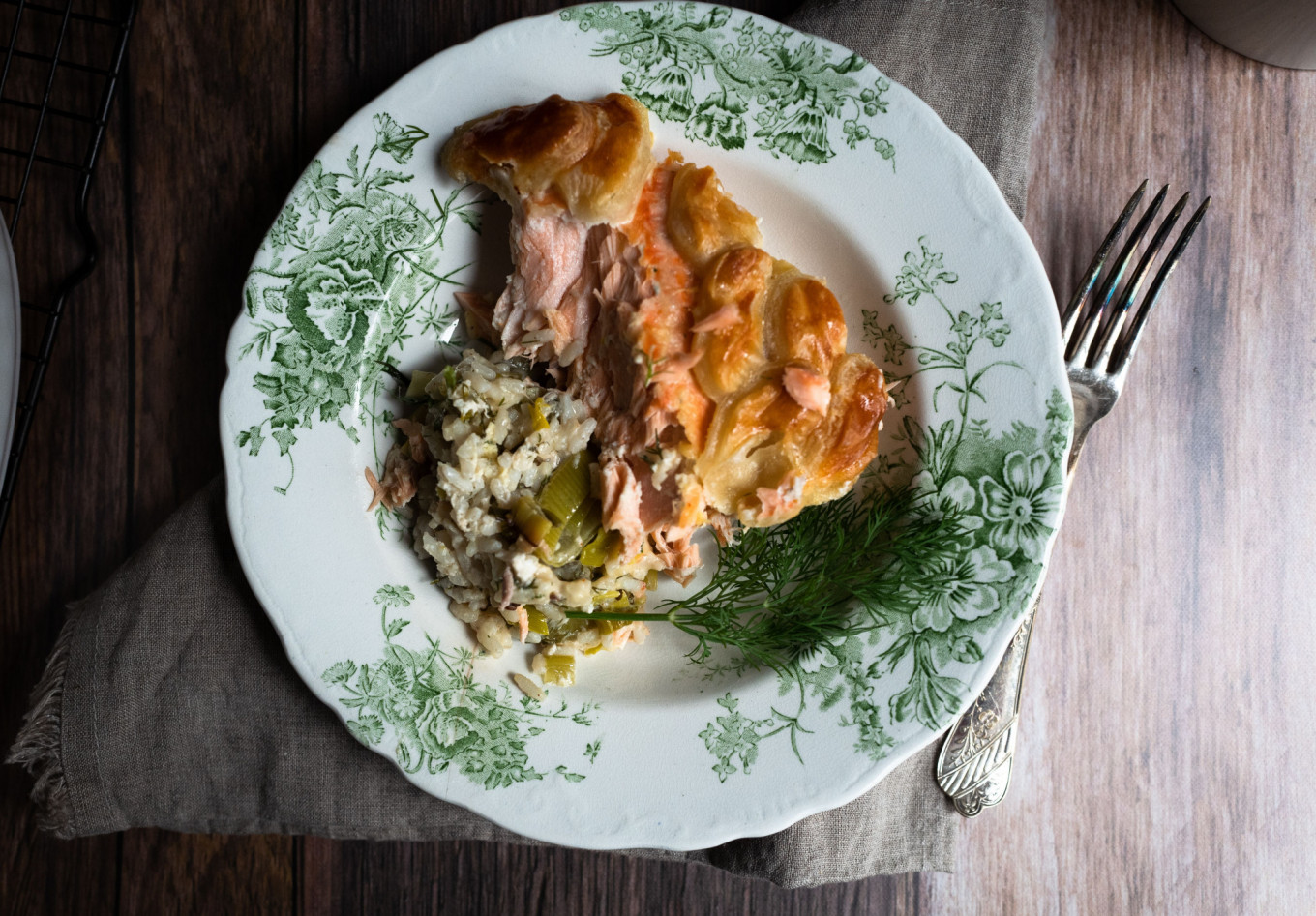“How’s March 8 shaping up,” I asked my Russian husband on our morning walk.
“Just fine,” he said, “absolutely fine.”
“Because,” I said, “we’re still sort of in lockdown, you know, and we aren’t expecting anything over the top — “
“It’s fine!” he hollered, which stopped me from offering to help him shop for the elaborate meal I fear he has planned.
So, once again, I am bracing myself for a scorched roasting pan and a very dry pork loin, the one recipe in my husband’s culinary arsenal.

This is a fairly typical scenario for March 8, International Women’s Day, which has brought many a Russian man to his knees. First celebrated in 1909, not in Russia but the United States, in honor of the garment workers’ strike in New York City, International Women’s Day was designed to shine a spotlight on a woman’s right to vote, to work, to hold public office, and demand equal pay for equal work. In Russia, which first celebrated International Women’ Day in 1913, calls were added for much-needed liberal reform in the autocratic Russian empire, calls that grew more strident as wartime hardships wore down an already overburdened populace. It was famously during the 1917 celebration of International Women’s Day that the ranks of the demonstrators swelled with sympathetic factory workers and even the Petrograd garrison troops and eventually escalated into the first revolution of that fateful year.
While International Women’s Day worldwide is still dedicated to furthering the cause of women, in Russia celebration of the holiday has strayed very far indeed from its original concept. March 8 today is a full-on romantic holiday, a one-way Valentine’s Day, during which women get fussed over, given chocolate, flowers, champagne, jewelry, naughty lingerie, and who knows, maybe a ticket to somewhere more exotic?

In the pre-COVID, “before times” Russian men could adroitly side-swipe the traditional role swap that is a hallmark of International Women’s Day, which traditionally calls for them to undertake all the domestic chores, while women have breakfast in bed and put their feet up for the rest of the day. Instead of donning an apron and rolling up their sleeves, Russian men could whisk their International Women off to Paris or the Maldives, or at the very least out to a fancy restaurant for a bang-up meal.
And frankly? After a year of lockdown, a trip to Omsk would get my juices flowing.
If you are celebrating at home, the message I want to convey to men on the eve of March 8 is simple: KISS. Not as in “kiss your international woman,” — though that’s probably a good idea on March 8 — but “Keep it Simple, Stupid.”
Don’t decide to tackle the most complicated dishes, such as stuffed suckling pig or Veal Orlov. And let me, gentlemen, steer you away from individual cheese souffles. Trust me, this kind of thing can only lead to one outcome: a desperate eleventh-hour takeaway order. Go for something simple and easy, a dish that ideally can be prepared in advance and does not depend on last minute tricky timing.
Enter this week’s recipe: a scaled-down version of salmon coulibiac. A coulibiac is Russian pie taken just about as far as it can go: a heavenly confection in which an entire salmon fillet is wrapped up in ornamental pastry with rice or buckwheat, eggs, mushrooms, onions, and the all-important viziga or the gelatinous spine of the sturgeon. Coulibiacs can also feature a layer of blini — just because, why not? This is a dish to be brought to the festive board with triumphant fanfare, a dish fit for milestone occasions and designed for hearty appetites.

Anton Chekhov has provided the best description of a Coulibiac to date in his marvelous short story “The Siren.” As several judges wait to go to their well-deserved dinner, they are delayed by their colleague who is finishing writing up his opinion. A discussion ensues about food that is so sensual — almost erotic — that the poor judge keeps having to start all over, thus delaying the meal even longer.
“The coulibiac must make your mouth water. It must lie before you, naked, shameless, a temptation. You wink at it, you cut off a sizeable slice, and you let your fingers just play over it… You eat it, the butter drips from it like tears, and the filling is fat, juicy, rich with eggs, giblets, onions …”
If that description doesn’t send you directly to the fishmonger, I don’t know what will.
A classic coulibiac is a fine choice for March 8 — if you are dining at Cafe Pushkin, that is, or have two days and vast experience to handle the fiddly dough and the blini, if you want to do the thing right. And then you have to find the veiziga, without which no coulibiac is truly finished. Good luck with that.
So, as this year’s annual public service announcement to the men of Russia, here is my “Kinda, Sorta Coulibiac,” which takes the key components of the dish — a salmon fillet, rice, and onions — and arranges them into a more modest dish that is still good enough to inspire “naked, shameless temptation.”
To make the pie, I quick cure the salmon for an hour in salt and dill, then give it a short, hot roast, before laying it on a bed caramelized leeks and celery, rice, smoked fish and capers with béchamel sauce. The mixture is then covered with puff pastry and baked. I advocate the use of packaged puff pastry for this recipe — there is no need for the long nail-biting rises that are part of the yeast dough in a real coulibiac, and smoked fish takes the place of the often hard-to-locate viziga. The preparation is neither time-consuming nor challenging, and you can make the filling ahead of time, which is ideal for a stay-at-home March 8, because now the men have more time to attend to all those annoying household tasks that have been piling up. Get them scrubbing that grout ladies, and polishing that silver, while you have your pie and eat it too.
As for me, I’ll be scrubbing out my best roasting pan.

Kinda-Sorta Coulibiac
Ingredients
- 1 ½ pound (680-grams) fillet of salmon
- 1 cup (236 ml) fresh dill, coarsely chopped, divided
- ⅓ cup (80 ml) kosher salt plus more for seasoning
- 6 Tbsp butter, divided
- 2 large leeks, cleaned and sliced (use the white and pale green parts only)
- 4 celery ribs, sliced
- 2 tsp nutmeg, divided
- 1 tsp paprika
- 2 cups (475 ml) cooked long grain rice
- ½ lb (225 grams) smoked fish, flaked (salmon, mackerel, and white fish all excellent choices)
- ⅓ cup (80 ml) capers
- 3 cups (700 ml) whole milk, warmed in a saucepan until just under a simmer
- 5 Tbsp all-purpose flour
- 1 tsp caraway seeds
- Black pepper
- 1 package puff pastry (14 oz or 400 grams), thawed overnight in the refrigerator
- 1 egg
Instructions
- Preheat the oven to 400ᵒF (205ᵒC) and adjust the rack to the middle position.
- Quick cure the salmon by sprinkling with ⅓ cup (80 ml) kosher salt and ½ cup (125 ml) dill. Gently rub the seasoning into the flesh of the fish, then cover with foil and refrigerate for 1 hour.
- While the salmon is curing, sauté the leeks in 3 Tbsp butter over medium low heat for 20 minutes until they get very soft. Sprinkle the leeks with salt and 1 tsp of the nutmeg, then add the chopped celery and sauté for an additional 10 minutes. Let the mixture come to room temperature, then toss with the cooked rice, smoked fish, capers, and remaining dill. Set aside.
- Brush the seasoning off the salmon with paper towel, then roast it, covered with foil in the preheated oven for 20 minutes. Don’t worry about it seeming underdone, it will finish cooking in the pie.
- While the salmon is roasting, make a béchamel sauce. Melt the remaining 3 Tbsp of butter in a saucepan over medium heat. When the butter is bubbling, add the flour and whisk to combine. Cook the mixture until it turns a deeper golden and smells nutty. Add the remaining nutmeg and paprika, then add the milk in small increments, whisking robustly as you do. When you have incorporated all the milk, turn down the heat and stir until the sauce coats the back of the spoon. Remove from heat and cool to room temperature. Add three-quarters of the sauce to the leek and rice mixture.

- Assemble the pie: spoon the leek and rice mixture into the bottom of an oven proof casserole. Spoon the rest of the béchamel sauce onto the top of the mixture. Use a spatula to gently remove the salmon fillet from its skin and lay the fillet on top of the béchamel sauce.

- Unroll the puff pastry and arrange it on top of the casserole in a decorative design if you wish — I like to decorate this pie with overlapping circles to mimic fish scales, but there is no need to be so elaborate. Cut a few slits in the pastry’s top to allow steam to escape. Whisk the egg with 2 Tbsp of water and brush the pastry with the egg wash.
- Place the casserole on a sheet pan to avoid dripping and put it back in the 400ºF (205ᵒC) oven and bake for 40 minutes, turning it 180 degrees halfway through to ensure it is baked evenly.
- Let the pie rest for 10-15 minutes before serving. A crisp salad is an excellent accompaniment, as are lightly pickled vegetables and a nice white wine.






